Electric vehicles are not just the frontier of automotive tech, they’re some of the best deals in today’s car market. As automakers offer dozens more EVs for 2025 and 2026, choosing the right electric car, truck, or SUV can feel overwhelming. This guide will help you navigate the EV lifestyle, understand key differences among models, and find the perfect EV to fit your needs. Whether you’re looking for a commuter car, family SUV, or a fully-capable electric truck, we’ll show you how to shop smart and drive electric with confidence.
Here are a few of the topics we’ll touch on in this EV buying guide for 2025:
- When buying an EV makes sense, and when it doesn’t
- EV ownership – from charging to maintenance
- Buying versus leasing an EV
- What to know about used EVs
- Tesla versus the rest – a look at top models
- How to negotiate EV prices with confidence
Ready to master the art of saving money on an EV purchase or lease? Let’s dive in and get started.
Part One: Is an EV Right For You? An Honest Look at Ownership
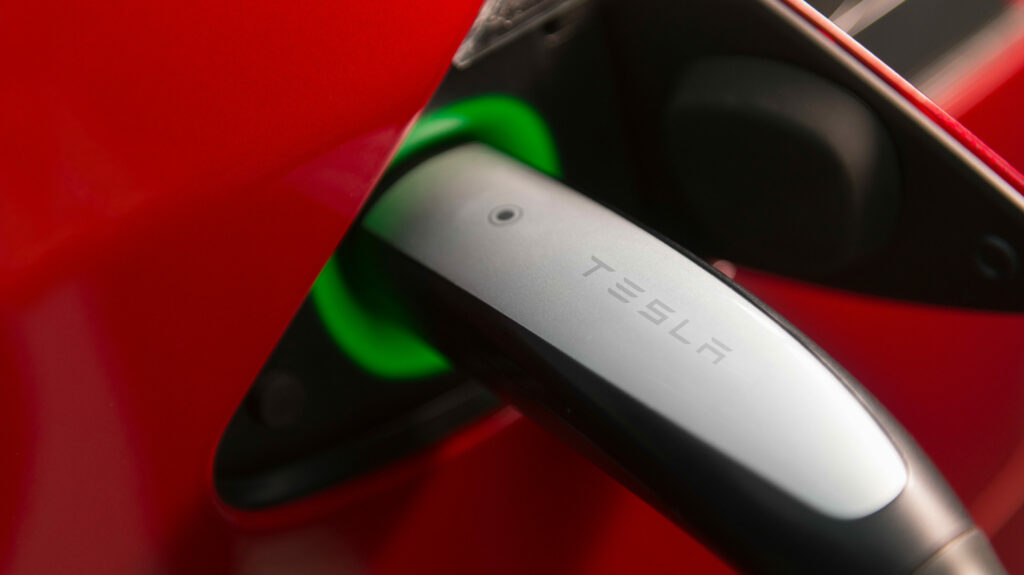
Electric vehicles are no longer niche; they’re becoming a mainstream option for drivers worldwide. It’s not just a North American phenomenon. In fact, other parts of the world are transitioning from internal combustion engines (ICE) to EVs quicker than the US market. In Europe, a quarter of all new car sales are electric, and more than half of China’s car sales are EVs. Needless to say, electric mobility is here to stay.
Still, EVs aren’t perfect for everyone. For some, going electric now could cause more hardship than convenience, particularly for those who frequently drive long distances, rely on towing capabilities, or live in areas with limited access to charging infrastructure.
With cutting-edge technology, environmental benefits, and growing infrastructure, EVs offer exciting possibilities. But as with any major purchase, it’s important to weigh the pros and cons to determine if an EV aligns with your lifestyle and needs. Here’s what drivers should consider to make an informed decision in 2025’s car market.
Why Consider an EV?
Cost Savings
EVs typically cost less to operate than traditional gas-powered vehicles. Electricity is cheaper than gas, especially when charging at home. EVs have fewer moving parts, which means lower maintenance costs over time. Battery replacements are rare, and costs are coming down quickly.
Performance and Innovation
EVs are known for their instant torque, quiet operation, and advanced features. Many 2025 models offer cutting-edge technology like self-driving capabilities, over-the-air updates, and the best infotainment systems.
Environmental Impact
All electric vehicles have a little-known superpower – efficiency. EVs are two to three times more efficient than their gas counterparts. This means that even in areas without much renewable energy in the grid, EVs pollute less for each mile driven than ICE cars. EVs help reduce local air pollution while slashing a household’s carbon footprint. This is especially true for those who tend to log more miles than the average driver, as the carbon footprint breakeven point is reached much quicker.
Incentives and Perks
Governments and local utilities often offer tax credits, rebates, and incentives for EV buyers. Additionally, EV owners can enjoy perks like access to carpool lanes, priority parking, and reduced tolls in some regions. Learn more about the current federal tax credit for EVs.
Energy Independence
Charging at home means you’re no longer reliant on fluctuating gas prices or trips to the pump. For drivers who want more control over their energy consumption, EVs offer a compelling solution. Pairing rooftop solar power with EV ownership is the perfect solution for those looking to take control of their energy consumption.
Pro and Cons of EV Ownership

Now, let’s take a look at the pros and cons of owning an electric vehicle:
Pro:
- The Latest and Greatest Tech: If you’re an early adopter of new technology, driving an EV will be a natural fit.
- Lower Operating Costs: Reduced fuel and maintenance expenses save money in the long run. EVs have far fewer moving parts and fluids, and therefore don’t have as many routine maintenance requirements as ICE vehicles.
- Environmental Benefits: Zero tailpipe emissions make EVs a greener choice, especially for those with a cleaner source of electricity.
- Quiet, Fun Driving: Instant torque and no engine noise offer a unique driving experience.
- Incentives and Tax Credits: Federal, state, and local programs can significantly reduce upfront costs.
Cons:
- Higher Upfront Costs: While EV prices are decreasing, they still tend to cost more upfront than traditional cars.
- Range Anxiety: Drivers may need to plan trips carefully to ensure they don’t run out of charge, especially in rural areas with fewer charging stations.
- Public Charging Hassles: DC fast chargers are growing in number, but will not be as common as gas stations any time soon. EV drivers often complain of broken or crowded chargers.
- Charging Time: Even with fast chargers, recharging takes longer than filling up a gas tank.
- Winter Range Loss: Cold temperatures can reduce an EV’s range by 20-30%, making them less practical for drivers in colder climates. See the best EVs for cold climates.
- Rapid depreciation: EVs depreciate faster than traditional vehicles. This is due to rapid advancements in technology, concerns about battery longevity, and compelling incentives for new EVs.
- Limited Range When Towing: EVs aren’t always the best choice for heavy-duty needs. When towing, electric trucks and SUVs typically lose between 30% and 50% of their driving range, meaning that charging every 100 to 150 miles will be necessary.
If you’re unsure about the EV lifestyle fitting your driving needs, consider a 24-month EV lease instead of buying. A short-term lease is a great way to try out EV ownership without the long-term commitment and depreciation. Now we’ll take a look at how your personal driving habits can affect your buying decisions.
Evaluating Your Driving Needs
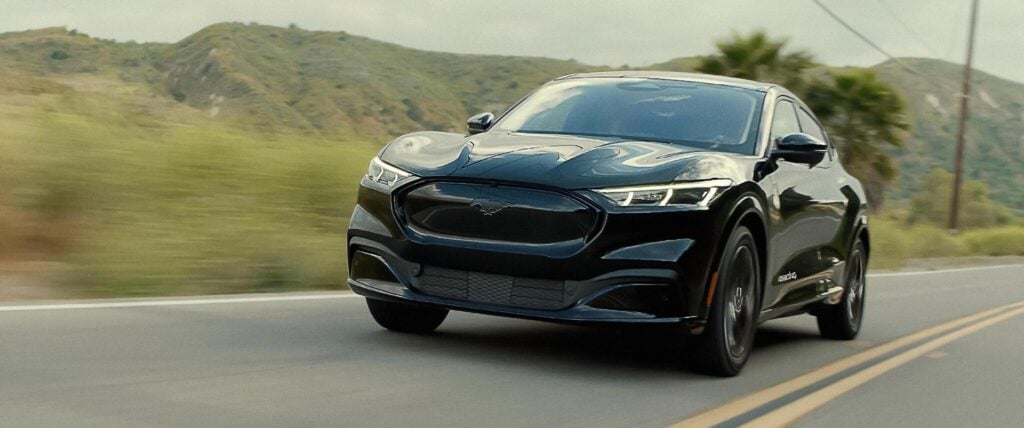
When deciding if an EV is right for you, understanding your driving habits is important. Electric vehicles excel in some scenarios but may be less practical for others. Here’s what to consider to find the perfect fit.
Annual Mileage
Start by estimating how many miles you drive each year. For those who drive well under 10,000 miles a year, fuel cost savings will take longer to reach a break even point for your wallet. But if you’re only saving $50 per month on fuel, an EV may not be worth the additional upfront cost.
City vs. Highway Driving
EVs tend to perform better in city driving, where regenerative braking can extend range by recovering energy. Highway driving, on the other hand, reduces range more quickly due to sustained high speeds and fewer opportunities for energy recovery. If most of your driving is in urban settings, you’re likely to get better value from an EV.
Long-Distance Trips
Consider how often you take trips exceeding 200 miles in a single day. While many EVs can comfortably handle daily commutes and shorter trips without needing a recharge, longer journeys may require careful planning. Charging stops add time to your travel.
Charging Access
Your housing situation plays an important role in the practicality of owning an EV. Drivers who can charge at home or at work enjoy the most savings and convenience. Level 2 home chargers can fully charge most EVs overnight, making it easy to start each day with a full battery. However, if you rely on public charging, costs can quickly add up.
Key Considerations:
- Homeowners: Installing a home charger is a long-term investment. Some new EVs include a free home charger as an incentive. Out of pocket, a level 2 charger with installation can cost anywhere from $1,000 to $3,000. If you drive less than 30 miles a day, it’s possible to forgo this expense. Level 1 ‘trickle chargers’ plug in to regular wall outlets, but only add a few miles of range per hour.
- Renters: Ensure your building or community has charging infrastructure or consider nearby public charging options. Determine how much it would cost each week to fuel up wherever you’d be charging.
- Workplace Charging: Access to workplace chargers can offset the lack of home charging, reducing reliance on public options.
Summary
To determine if an EV aligns with your lifestyle, evaluate your driving habits, the frequency of long trips, and your charging options. An EV can offer serious savings, but careful consideration of these factors will ensure you make an informed decision.
Federal, state, and local incentives benefit some, but not all

Federal, state, and local incentives can make EV ownership more affordable, but eligibility varies. The federal EV tax credit offers up to $7,500 for qualifying vehicles and buyers, but income limits and manufacturing requirements apply. Some states offer rebates, tax credits, or other incentives. Local utilities may also provide discounts for home chargers or reduced electricity rates for EV charging. However, not all buyers qualify. Always check the latest requirements to see what benefits apply to your situation.
EV Insurance Rates
When purchasing an EV, it’s essential to consider the potential impact on your insurance premiums. EV insurance tends to be slightly more expensive than coverage for comparable gas-powered vehicles, but this is typically due to the higher value of EVs, not because they’re electric. Repair costs, especially for battery components, can also contribute to higher premiums.
For high-performance electric models, like sports cars, insurance premiums can be significantly higher. Before committing to an EV, it’s always a good idea to request insurance quotes. This step ensures you’re aware of the potential costs and avoids any surprises after the purchase.
👉 Compare Insurance Rates in Minutes with CarEdge
Once you’ve done your research and determined that your next car will be electric, it’s time to consider your options and shop smart. Next, we’ll take a close look at whether buying or leasing makes the most sense, what to know about used EVs, and how to find the electric model that best suits your needs. Let’s dive in!
Part Two: Shopping For EVs with Confidence
Should You Buy or Lease an EV in 2025?

Are you the type of driver who holds on to a vehicle for years, or do you like to upgrade every few years? Your approach to vehicle ownership can significantly influence your financial outcomes. For those who frequently upgrade, leasing can save thousands of dollars in avoided depreciation costs. Here’s what EV shoppers should consider when deciding whether to buy or lease in 2025:
Incentives and Rebates
- Buying: Federal and local incentives, like tax credits, go directly to you when you purchase an EV. Not all buyers qualify for incentives. Learn more about the federal EV tax credit in 2025.
- Leasing: Incentives technically go to the automaker, but they often pass them on to you as discounts, reducing your monthly lease payments or upfront costs. You’ll have to verify that you’re getting the savings passed on to you.
Depreciation
- EVs tend to depreciate steeply in the first three years of ownership, especially with rapid advancements in battery technology, and the frequency of 0% APR financing and cheap lease deals for EVs.
- Leasing allows you to avoid the downside of depreciation entirely, making it a smart choice for those who want to switch to the latest models frequently.
- 👉 Compare vehicle depreciation with the CarEdge Research Hub (100% free tools).
Warranty Coverage
- Whether you buy or lease, you’ll enjoy the same warranty benefits. Most EVs come with comprehensive powertrain warranties that cover the battery and electric motor for 8 years or 100,000 miles.
- EV buyers may want to consider an extended warranty for protection against costly repairs beyond the limits of the manufacturer warranty. Get the best price for your extended warranty.
Affordability of Leasing
- In 2025, EV lease deals are exceptionally competitive. Many popular electric models are available for under $300/month with less than $4,000 due at signing (before taxes and fees). Leasing is an attractive option for those seeking an affordable way to enter the EV market.
Mileage Considerations
- Leasing may not be ideal for high-mileage drivers. Most lease agreements include a 10,000 to 12,000 miles per year allowance, and exceeding that limit can result in significant overage fees. If you drive more than 15,000 miles annually, buying is likely the better financial decision.
Long-Term Ownership
- If you plan to keep your EV for many years, buying makes more sense. You’ll build equity in the car over time, and as EV technology improves, battery degradation is becoming less of a concern for long-term owners. However, if you’re likely to want the ‘latest and greatest’ new car in a few years, leasing is the smart way to go. Learn more about vehicle depreciation.
The Bottom Line
Leasing is an excellent choice for drivers who want low upfront costs, predictable monthly payments, and the flexibility to upgrade to the latest EV models every few years. On the other hand, buying is the way to go for those who drive long distances, plan to keep their EV long-term, or want to fully benefit from tax credits and incentives. Assess your driving habits and financial priorities to decide which option aligns best with your lifestyle.
If you’re planning to lease an EV, here are some free resources to check out:
For those on the road to financing or paying cash, here are some free tools to get you started:
Should You Buy a New or Used EV in 2025?
As the EV market matures, buyers have more choices than ever, from new electric models equipped with faster charging and longer range to used EVs offering affordability. Deciding whether to buy new or used depends on your budget, priorities, and driving habits. Here’s what to consider when choosing between a new or used EV in 2025:
Price and Affordability
- New EVs: Prices for new electric vehicles are dropping, especially with growing competition among automakers. Federal tax credits and state incentives can make new EVs more affordable. It’s common for manufacturers to advertise low APR financing for electric models, and leases under $300/month. See the best deals today.
- Used EVs: Depreciation hits EVs hard during the first few years, which makes buying a used model significantly cheaper. Used EVs can provide tremendous value if you don’t need the latest features, and are okay with a pre-owned vehicle.
Battery Health and Longevity
- New EVs: With advancements in battery technology, newer EVs tend to have better range, improved efficiency, and warranties covering battery health for up to 8 years or 100,000 miles.
- Used EVs: Battery degradation can be a concern for older EVs, though it depends on factors like mileage, charging habits, and climate. It’s normal for EVs to lose between 5% and 10% of their original rated range after 100,000 miles due to expected battery wear and tear. Before buying a used EV, ask for a battery health report for peace of mind. Ensure that any recall fixes have been completed, and that all powertrain and charging components are in good working order. Recurrent offers battery health reports for any EV. You may want to consider an extended warranty for your EV.
Range and Features
- New EVs: Range continues to improve in newer models, with many offering over 300 miles per charge. Newer vehicles also come with the latest tech, including faster charging capabilities, highway driver assistance, advanced safety systems, and more.
- Used EVs: Older models may have less range, slower charging, and fewer features, but their disadvantages may be worth the significant cost savings.
Incentives and Savings
- New EVs: Buyers of new EVs often qualify for federal and state incentives, reducing upfront costs significantly. Some automakers also offer attractive financing rates and lease deals.
- Used EVs: As of 2025, only used EVs under $25,000 qualify for federal incentives. Some states and utilities offer rebates for purchasing pre-owned electric vehicles. Learn more about the used EV tax credit.
Charging Costs and Availability
- New EVs: Some new EVs come with perks like complimentary charging at public stations, saving you money and adding convenience.
- Used EVs: These perks typically don’t transfer to used buyers, but affordable charging at home can still result in substantial savings compared to gasoline vehicles.
Resale Value
- New EVs: Rapid depreciation means new EVs lose value quickly, which is something to consider if you don’t plan to keep the car long-term. Would you be comfortable with your vehicle possibly losing 30% to 40% of its value over just two to three years? If not, either a lease or a used EV would be the better option.
- Used EVs: Much of the depreciation has already occurred, making used EVs a safer choice if you’re concerned about resale value. Depreciation slows after the first few years of the vehicle’s life.
The Bottom Line
Buying a new EV is the right choice if you want the latest technology, a clean vehicle history, and access to the most tax credits and incentives. On the other hand, a used EV is ideal for budget-conscious buyers who prioritize affordability. Whichever route you choose, make sure to evaluate the battery health, research available incentives, and consider your driving needs to find the perfect EV for your lifestyle.
Narrowing Down Your Search: Choosing the Right EV For You

In 2025, there are 57 electric models on sale in America, with dozens more arriving by 2026. The EV market is growing, giving buyers more options, and more decisions to make when shopping. Next, we’ll take a look at what separates the popular EVs on the market, and how to find the perfect fit for you.
Today, just under half of EVs sold in America are Teslas. Why do so many EV buyers go with Tesla? For many drivers, it comes down to the simple fact that Tesla has the largest, most reliable network of DC fast chargers in North America. With more than 2,500 locations across the United States, and the highest reliability by far, Tesla’s Supercharger network takes the hassle and planning out of road tripping with an electric vehicle.
However, the Tesla Supercharger network is opening up to other automakers. Ford, GM, Hyundai, Kia, Rivian, Mercedes-Benz, and several other OEMs have all gained access to Tesla Superchargers. More brands are set to join the network in 2025.
With Tesla’s charging network no longer a walled garden, more drivers are considering other makes and models. Other growing charging networks include EVgo and Ionna, bringing chargers to almost every corner of the country. Needless to say, charging an EV is quickly becoming less of a hassle in most of the US.
With the charging situation covered, now we can take a look at which EVs are top sellers in the North American market.
Which EVs are most popular in America in 2025? Here’s a look at the top 10 electric vehicles in the US right now:
- Tesla Model Y
- Tesla Model 3
- Ford Mustang Mach-E
- Honda Prologue
- Hyundai IONIQ 5
- Chevrolet Equinox EV
- Chevrolet Blazer EV
- Kia EV6
- Kia EV9
- Rivian R1S
In addition to these top-sellers, electric full-size trucks have recently hit the market. The Ford F-150 Lightning, Tesla Cybertruck, Chevrolet Silverado EV, GMC Sierra EV, and Rivian R1T are the most popular electric trucks in America today.
👉 Every EV On Sale in 2025 (The Complete List)
As you can see, EV shoppers have plenty of options to choose from in 2025.
So, how does one begin to cross shop so many electric options? To help you narrow down your search to ultimately find the perfect EV, we’ve created this guide to help you think through your options clearly.
1. Consider Your Location
- Service and Support: Which car brands have dealerships or service centers nearby? If you live in a rural area or smaller city, you may find that Tesla, Rivian, or Lucid service centers are hours away. This could turn routine maintenance or repairs into a logistical challenge. On the other hand, well-established brands like Ford, Hyundai, Honda, and Chevrolet typically have more widespread service networks.
- Climate Conditions: EVs can lose range in extreme temperatures. If you live in a region with harsh winters or scorching summers, look for models with features like heat pumps or all-wheel drive to better handle your local climate.
2. Define Your Budget
- Upfront Costs: In 2025, EVs come in a wide range of prices. Many models are available under $50,000 before incentives, with several compelling options starting under $40,000. Research federal tax credits, state incentives, and utility programs that can lower the total cost.
- Total Cost of Ownership: Consider long-term costs like charging (home vs. public), maintenance, and insurance. EVs generally have lower running costs than gas-powered cars, but these savings can vary based on your driving habits and access to affordable electricity. Public fast charging can cost as much as gas in some cases. Get an insurance quote before you buy to avoid unpleasant surprises. Some states have extra registration fees for electric vehicles to fund transportation projects, since EVs don’t pay for any gas tax.
3. Evaluate Your Driving Needs
- Daily Commutes: How many miles do you drive on an average day? Most EVs on the market today offer at least 250 miles of range, but those with longer commutes may prefer models with 300+ miles of range for added peace of mind. Popular models like the Tesla Model Y, Kia EV6, Ford Mustang Mach-E, and Chevrolet Equinox EV all offer over 300 miles of range in select trims, among others. The Lucid Air has the longest range of any EV on the market today.
- Road Trips and Long-Distance Travel: Are you frequently hitting the road for trips over 200 miles? Investigate the availability of fast chargers along your typical routes. Models that can access the Tesla Supercharger network offer unparalleled convenience, while other brands are rapidly expanding their networks through partnerships. PlugShare is a great free tool for finding chargers anywhere in the U.S.
- Cargo and Passenger Needs: Will this EV need to carry a family, pets, or lots of gear? Larger models like the Hyundai Ioniq 9, Kia EV9, and Rivian R1S offer spacious interiors and ample cargo room, while smaller cars like the Tesla Model 3 and Hyundai IONIQ 6 are great for those with minimal space requirements.
4. Think About Charging Options
- Home Charging: Do you have a garage or driveway where you can install a Level 2 home charger? This is the most convenient and affordable way to charge an EV. If you rent or live in a multi-family dwelling, check with your property manager or HOA about installing chargers or using shared charging stations.
- Public Charging: If home charging isn’t an option, consider the availability and cost of public charging in your area. Frequent reliance on public chargers can increase ownership costs, so it’s essential to choose a model compatible with widely available networks like Tesla Superchargers, EVgo, and Electrify America.
5. Explore Available Features
- Performance: Some drivers prioritize a sporty ride, while others care more about comfort and range. Decide what’s most important to you and focus on EVs that match your preferences. Don’t forget to consider how a sporty car could impact your auto insurance rates.
- Tech and Safety: Newer EVs come with a range of advanced features, from semi-autonomous driving systems to the latest advancements in collision avoidance. It’s always smart to compare crash test results and recalls before buying or leasing any vehicle.
- Warranty Coverage: All new EVs come with robust powertrain warranties, but some are better than others. Be sure to compare warranties and what they cover when narrowing down your choices. Consider an extended warranty for peace of mind.
Tips for Buying an EV: Do your homework first!
So, you’ve narrowed down your EV options to a few promising models. It’s time to get serious, and get excited! The next step is to navigate the buying process effectively to ensure you get the best deal and make a confident purchase. Here are some tips to guide you, no matter what model you’re interested in:
1. Compare Incentives
- Federal and State Incentives: Check if your preferred EV qualifies for federal tax credits or state-specific incentives. Many states offer rebates, reduced registration fees, or HOV lane access for EVs. However, just because the electric model qualified for incentives previously does not guarantee that it currently does. It’s best to check with the official guidance.
- Manufacturer Offers: Automakers often run promotional deals, such as zero percent financing, lease specials, or big cash discounts. 👉 See the best deals this month in one spot.
2. Review Pricing and Negotiation Options
- Out-the-Door Pricing: Even while you’re still shopping around and comparing EVs on your short list, it’s smart to request itemized out-the-door price sheets for specific cars you’re seriously interested in. This ensures transparency and helps you compare quotes from different dealers. Try Our Free Out-the-Door Price Calculator!
- Leverage Dealer Competition: Use quotes from multiple dealerships to negotiate the best price. Dealers are more willing to make concessions when they know you’re shopping around. Download these FREE Car Buying Cheat Sheets!
- Beware of Add-Ons: Watch for unnecessary dealer add-ons, like theft etching, nitrogen-inflated tires, pinstripes, and overpriced extended warranties. These types of ‘forced add-ons’ are especially common with used cars.
- 👉 Be sure to review our Guide to Car Dealership Fees and Add-Ons.
3. Inspect Range, Battery, and Features (Take Notes!)
- Test Drive for Range and Comfort: Test drive each EV on your shortlist to get a feel for how it handles and performs. Check the range on a full charge and verify the battery condition for used EVs.
- Verify Charging Compatibility: Make sure the EV’s charging port and included adapter suit the charging stations you plan to use. If not, you’ll need to budget for a charging adapter, which can cost around $200. Some new EVs come with free charging at specific networks, which can be a valuable perk. Be sure to ask if any free charging incentives apply.
- Explore Available Features: Confirm that your preferred trim level includes the features that matter most to you, such as advanced driver assistance, premium audio, or heated seats. Base models can have surprisingly sparse interiors.
4. Consider Financing Options
- Get Pre-Approved: Secure pre-approval from a bank or credit union before heading to the dealership. This gives you leverage and clarity on your financing options.
- Manufacturer Financing: Compare your pre-approved rate to any financing offers from the automaker. promotional APR deals can sometimes beat third-party lenders, especially for new EVs with zero percent financing.
- Factor in Insurance Costs: Obtain insurance quotes for your shortlisted EVs. Higher premiums for luxury or performance EVs can impact affordability. 👉 Compare quotes with CarEdge in minutes!
6. Tips for Used EV Buyers
- Check Battery Health: If you’re buying used, request a battery health report. Recurrent is one popular provider of EV battery reports. A degraded battery can impact range and replacement costs are significant.
- Verify Charging Speed: Older EVs may not support the fastest charging speeds. Ensure the model you choose fits your charging habits. When buying used, we recommend asking the dealership if they’ve fast charged the car since it has been in their possession. If not, ask to take it to a charger on a test drive to make sure that charging capabilities are fully functional.
- Consider Mileage and Warranty: Look for used EVs with lower mileage, a clean history report, and plenty of remaining powertrain warranty for added peace of mind.
By following these tips, you can approach EV shopping with confidence and ensure you get the most value for your investment. Whether you’re buying new or used, a little preparation goes a long way towards making an informed decision you can be proud of.
In the final section of this guide to buying an EV, we’ll take a look at how to negotiate EV prices to drive home the most savings.
Part Three: Negotiating the Best EV Deal

Once you’ve chosen the EV that fits your needs, it’s time to close the deal. Whether you’re buying new, used, or leasing, negotiating effectively can save you thousands of dollars.
Here are tailored tips for each type of purchase:
Buying an EV (New or Used)
- Research Dealer Inventory: Focus on EVs that have been on the lot the longest. This is true whether you’re interested in new or used cars. Dealerships are more likely to negotiate on cars they’re eager to sell. Don’t hide the fact that you’ve got the data. See days on the lot and more with CarEdge Pro.
- Leverage Incentives: Some dealers may include incentives in their advertised price. The out-the-door price should not include incentives, unless you’re looking at a lease with incentives included.
- Negotiate Out-the-Door Pricing: Don’t focus solely on the sticker price or monthly payments. Insist on an itemized breakdown of all fees, taxes, and additional costs to ensure transparency. Use this free Out-the-Door Price Calculator to estimate your total price, but always get a written OTD sheet from the dealer.
- Avoid Add-Ons: Dealers often try to upsell add-ons like etching, ‘protection packages’ or other accessories. Decline anything that doesn’t provide real value. Ask to see the product’s contract if you’re given any trouble. Learn more about negotiating dealer add-ons.
- Don’t Reveal Too Much Too Early: No matter what the salesperson says, you don’t have to share how you are paying for the vehicle, or whether or not you have a trade-in, until you’ve agreed on the out-the-door price.
- Timing Matters: Shopping at the end of the month or quarter can work in your favor, as salespeople aim to hit quotas.
Tips for Used EV Buyers:
- Get a Pre-Purchase Inspection: Before negotiating, have an independent mechanic inspect the EV, especially the battery health. Use the findings as leverage if repairs or battery degradation are detected. Check out this guide to Pre-Purchase Inspections.
- Research Market Value: Use tools like CarEdge Pro to understand the fair market value of a used EV. Dealers are more likely to match or beat a competitive offer if you have proof.
- Certified Pre-Owned (CPO) Deals: CPO EVs may come with added warranty coverage and assurance of quality, but our CarEdge car buying experts don’t think buyers should pay a higher price for a CPO used car. Consider it a bonus, but not a necessity.
- Used EV tax credits: The state of electric vehicle incentives is always in flux, so it’s advised to check the latest program updates when you shop. As of early 2025, used EVs under $25,000 qualify for up to $4,000 in tax credits, but restrictions apply. Learn more from the IRS.
Tips for Leasing an EV
- First, review this guide to negotiating a car lease. Print it out and take it with you!
- Look for Lease Incentives: See today’s best offers at the CarEdge Deal Hub. Automakers often subsidize EV leases to promote sales. Not all dealers participate in manufacturer incentive programs.
- Understand the Residual Value: The residual value (what the car is worth at the end of the lease) determines your monthly payment. Higher residual values mean lower payments, so ask about it during negotiations. Learn more.
- Negotiate the Money Factor: The money factor is essentially the interest rate on your lease. If you have excellent credit, insist on a lower money factor to save on financing costs.
- Mileage Allowance: Standard leases include 10,000 to 12,000 miles annually. If you drive more, negotiate a higher mileage allowance upfront, as overage fees can add up quickly. If you drive more than 15,000 miles a year, purchasing may make more sense.
- Avoid Dealer Markups: Confirm that dealer fees and add-ons haven’t inflated your upfront payment. Lease agreements should be simple and straightforward.
- Don’t Forget Taxes and Fees: Advertised lease deals don’t include state and local taxes, and required fees. If you’ll want to have the lowest payment possible, you’ll have to pay for taxes and mandatory fees at lease signing. Otherwise, expect your payment to be a bit higher.
General Tips for Negotiation
- Stay Calm and Confident: Negotiation is a business transaction. Don’t let pressure or emotions sway your decisions.
- Be Willing to Walk Away: If the dealer isn’t meeting your price, don’t hesitate to leave. Often, they’ll follow up with a better offer.
- Avoid Talking Monthly Payments: A common dealership tactic is to talk monthly payments early in your negotiation. It’s easy to make a $500 add-on look cheap when it’s explained as costing ‘only’ $8 per month. Always discuss the out-the-door price.
- Secure Financing in Advance: Even if you plan to use dealer financing, having pre-approved financing gives you more leverage. Don’t show your cards too soon!
- Ask for Perks: If the price is firm, negotiate for extras like free charging equipment, maintenance packages, or all-weather mats. Again, don’t hesitate to walk away and shop elsewhere!
By mastering negotiation, you can drive away with confidence, knowing you secured the best possible deal on your new, used, or leased EV. A little preparation goes a long way!
👉 Download these FREE car buying cheat sheets to take with you!
How CarEdge Can Help

Co-founded by father and son duo Zach and Ray Shefska in 2019, CarEdge set out to take the hassle out of car buying for all. It’s time to make the car market more transparent, and less confusing for the consumer. Over the past five years, the CarEdge team has created free and premium tools and resources to help car buyers stay in control of their deal.
Here’s how we can help you with your EV purchase or lease:
- CarEdge Pro – Insider tools for DIY car buyers, with data for empowered negotiation.
- CarEdge Concierge – The most-trusted car buying service today, with home delivery available.
- The Deal Hub – Where we gather all of the best new car offers, updated every month.
- Free help on YouTube – Subscribe to the CarEdge and CarEdge Live channels for up-to-date information!
- The CarEdge Blog – featuring hundreds of free car buying guides and tools to help you secure the best deal, every time.
Have questions about how we can help you save time and money? We’ve got answers. Reach out to our amazing team by sending us an email to [email protected], or giving us a call at 402-744-6203.
We’re real people here to save you real money!


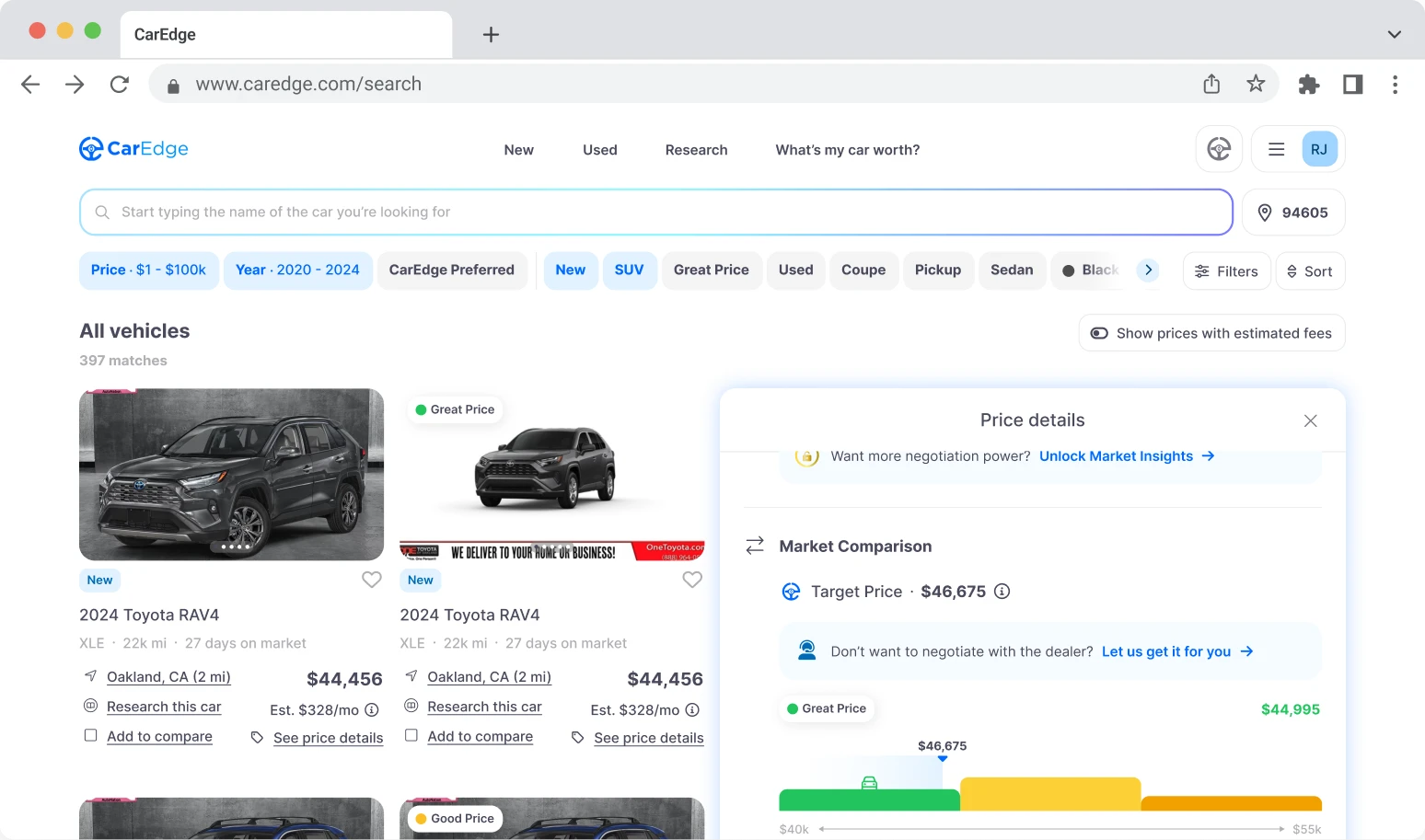





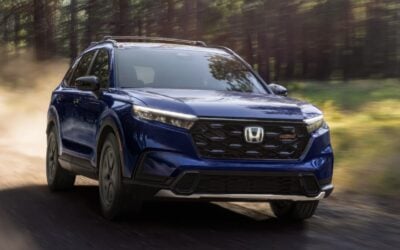

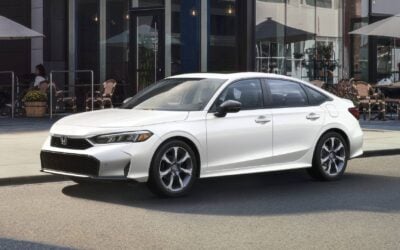


0 Comments